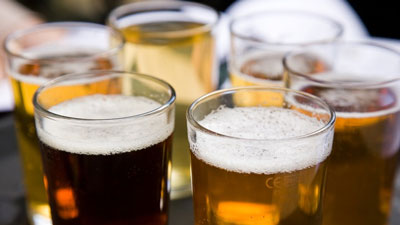F. Scott Fitzgerald spent the summers of 1935 and 1936 at a luxury resort in Asheville, North Carolina, ultimately to be closer to his wife, Zelda, who was residing in a nearby mental institution. Fitzgerald himself was facing his own demons, undergoing the “beer cure,” in which he simply replaced his love for gin with beer instead. While it was common for heavy drinkers to believe such a cure would be beneficial, it is pretty obvious that this is not the case.
A pilot study conducted in an East Baltimore ER department from April 2010 to June 2011, found that 105 patients admitted to drinking alcohol within 6 hours before heading to the hospital. In this group, 69% were male and 69% were African American. The research found that ER admissions increased for patients who consumed these five beer brands: Budweiser, Bud Ice, Bud Light, Colt 45, and Steel Reserve.
Impact Databank, a firm that aided the research, compared the ER patients’ alcohol use with the availability of alcohol on the market. What these studies found is that the amount of beer consumed by these ER patients, was lower than its proportion of the national market, but male patients reported drinking higher quantities of beer or malt liquor.
Lead study author David Jernigan says: “Understanding the relationship between alcohol brands and their connection to injury may help guide policy makers in considering taxation and physical availability of different types of alcohol, given the harms associated with them.”
A fact sheet seen on alcohol use and health from the Centers for Disease Control and Prevention (CDC) discovered that 80,000 deaths each year are caused by excessive alcohol use. Malt liquors accounted for 46% of the beer consumed by the people presenting to the ER, but the same beverages account for only 2.4% of beer consumption in the general market. These brands are exactly the same as they are listed above.
In 2006, the economic cost of drinking too much was an estimated $224 billion. In February 2013, a study from Canada found that raising alcohol prices saves lives. It cites a 10% rise in the average price of alcoholic drinks being linked to 32% fewer alcohol-attributed deaths.


